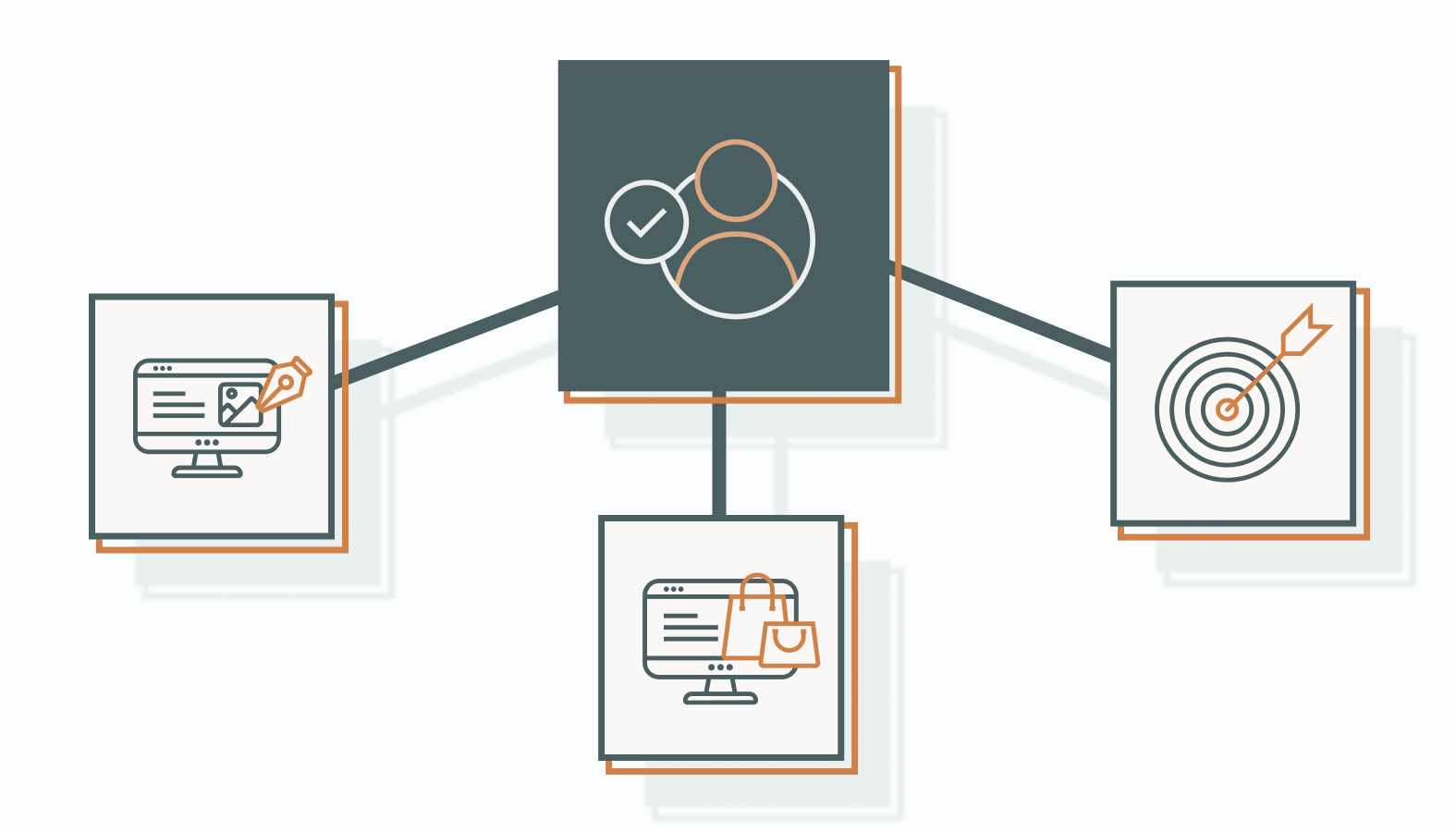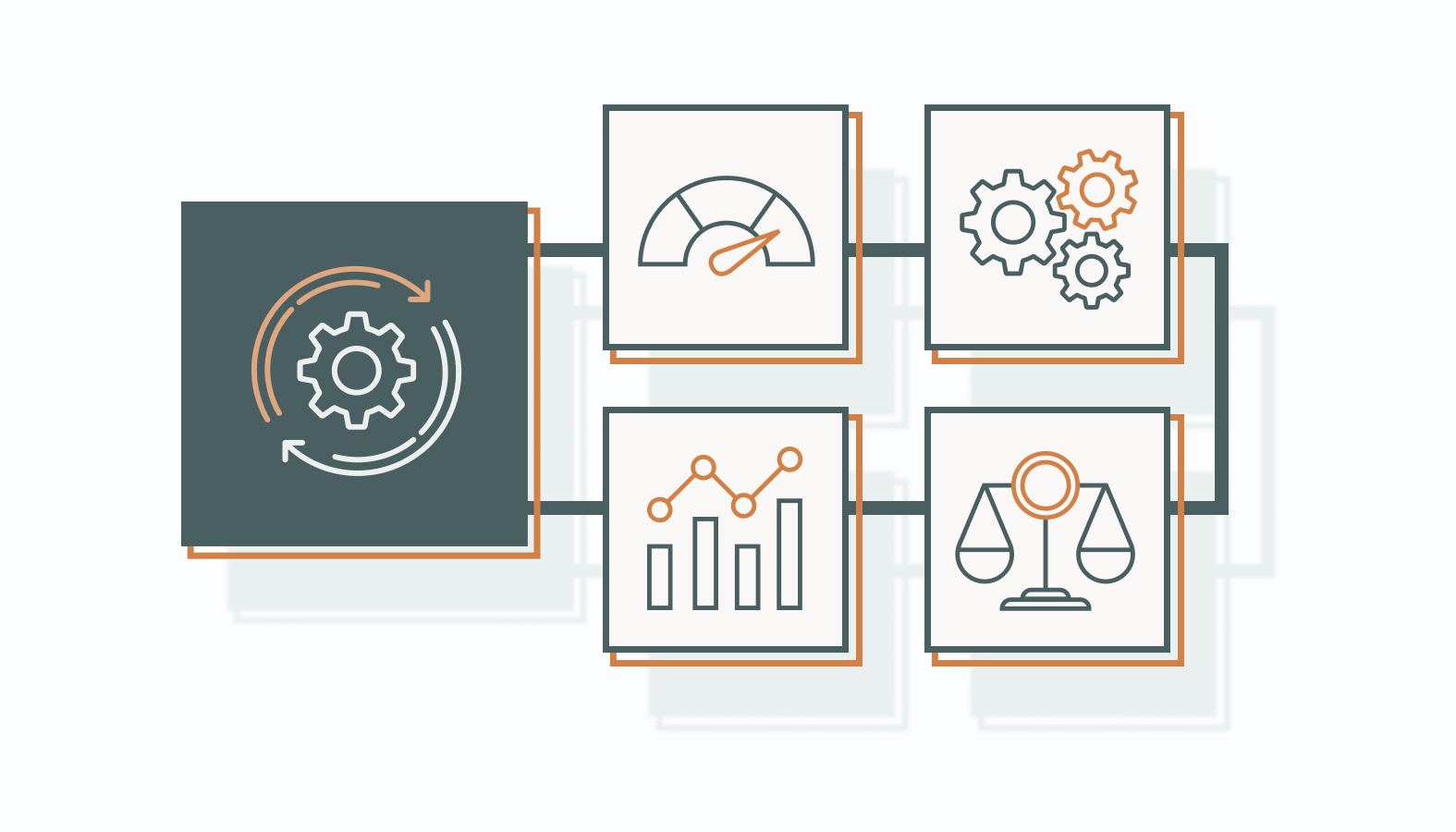Every click, scroll, and purchase tells a story, and today’s smartest brands finally know how to listen. Behavioral marketing turns those digital breadcrumbs into strategy, revealing what customers actually want instead of what marketers assume they want.
The challenge? Most companies collect mountains of data, yet fail to use it meaningfully or ethically. Behavioral marketing bridges that gap by grounding strategy in real behavior rather than assumptions.
Mastering behavioral marketing can mean the difference between building loyalty and losing audiences to brands that understand them better.
Let’s break down how it works, why it matters, and how to apply it responsibly to stay ahead of the curve.
What is Behavioral Marketing?
Behavioral marketing is where data meets strategy in the most human way possible. It moves beyond demographics and assumptions, tracking real customer interactions and transforming them into actionable insight and smarter campaigns that resonate.
Here’s how it works:
- Tracks behavior in context – from page visits and purchases to engagement time and repeat interactions.
- Transforms insights into action – using real data to guide creative, offers, and messaging that feel timely and relevant.
- Drives personalization at scale – creating value without crossing privacy lines.
In an era where attention spans vanish in seconds, understanding the “why” behind consumer actions is a serious advantage.
Marketers using behavioral insights can:
- Tailor experiences around intent, not assumptions.
- Deliver offers that align with real needs and timing.
- Build campaigns that feel personal yet efficient.
Modern behavioral marketing leans heavily on machine learning and AI. These tools don’t just crunch data; they:
- Spot emerging trends early.
- Reveal opportunities hidden in plain sight.
- Enable real-time adjustments that keep brands one step ahead.
When executed thoughtfully, behavioral marketing turns raw data into intelligence, powering campaigns that connect, influence, and perform.
Types of Behavioral Marketing Approaches
Behavioral marketing isn’t one tactic. It’s a toolkit for transforming audience actions into meaningful engagement.
Here’s a closer look at the approaches that make behavioral marketing a powerhouse today.
Customized Website Experiences
Websites can now respond in real time, personalizing layouts, content, or offers based on user behavior.
Amazon’s recommendations or Netflix’s “Because You Watched” rows prove that intelligent adaptation fuels both satisfaction and retention.
Tailored Product Recommendations
Data-driven suggestions influence what people actually buy.
By analyzing browsing and purchase patterns, brands can surface products aligned with genuine interests.
A good example of this is Spotify’s Discover Weekly, which delivers hyper-relevant content that keeps users coming back.
Effective Retargeting and Targeted Ads
Retargeting converts curiosity into action by reminding users what captured their attention.
Brands like Expedia show how timely, relevant reminders can lift conversions without feeling pushy.
Personalized Email Campaigns
Behavior-based emails cut through inbox clutter. By tailoring timing and content to individual behavior, brands like Airbnb maintain engagement without fatigue.
Smart Push Notifications
Push alerts work when they respect timing and context. CNN, for instance, boosts engagement by sending topic-based alerts users actually want to read.
Behavioral marketing succeeds when every touchpoint feels intentional, turning ordinary interactions into lasting relationships.
Behavioral Marketing Segmentation
Segmentation turns raw data into a strategy by showing marketers who their audience really is and how to connect with them effectively.
By breaking consumers into distinct groups based on actions, interests, and habits, brands can deliver messaging that feels targeted and intentional, increasing engagement and driving smarter outcomes.
Utilizing Visitor Data and Geolocation
Location matters. By analyzing where users access services from, brands can make offers and content more contextually relevant.
Geotargeted campaigns, like Starbucks nudging nearby customers with store-specific offers, demonstrate how local insight can translate into higher foot traffic and stronger connections. It’s precision without the guesswork.
Analyzing Buyer Intent and Transactions
Every purchase and browsing session is a clue. Brands that read these signals can anticipate what a customer might want next, recommending complementary products or crafting offers that hit the mark.
Amazon’s product suggestions illustrate the power of transaction-driven insight, delivering value while encouraging repeat behavior.
Leveraging Engagement Metrics
Clicks, time on page, or scroll depth aren’t vanity metrics. They’re a window into what captures attention. Engagement metrics help marketers refine content and campaigns so users spend more time interacting, exploring, and converting.
Media companies like The New York Times use these insights to serve readers content they’ll actually stick with, keeping visits longer and experiences richer.
Employing Psychographic Segmentation
Beyond actions, motivation matters. Psychographics uncover consumer attitudes, lifestyles, and values, allowing brands to align campaigns with what truly drives their audience.
Nike, for example, targets messaging that resonates with its customers’ aspirations and values, creating a connection that goes deeper than products alone.
By combining these segmentation strategies, brands move past generic targeting, delivering messaging that’s precise, timely, and meaningful. As a result, it turns insights into interactions that build trust, loyalty, and measurable results.
How to Implement Successful Behavioral Marketing Strategies
Executing behavioral marketing well is precision engineering. Between evolving privacy laws, complex data ecosystems, and consumer expectations for personalization, marketers have to balance innovation with integrity. The brands that pull it off are translating human behavior into intelligent, ethical, and scalable strategy.
Below are the pillars of a behavioral marketing program built to perform and endure.
1) Recognize Key Behavioral Signals
Data tells a story, but only if you know how to read it. The most successful marketers track the behavioral signals that actually matter, then interpret them with context, not assumptions.
Key signals include:
- Browsing patterns: Frequency, dwell time, and navigation paths show what captures attention and what doesn’t.
- Purchasing trends: Transaction timing and frequency uncover buying cycles and potential churn points.
- Engagement activity: Social interactions, form fills, and email clicks reveal interest levels and conversion readiness.
Smart marketers blend analytics, CRM data, and feedback to connect these dots. The result? Campaigns that adapt in real time to what customers are doing (not just what they once did).
2) Leverage Advanced Tools and Technologies
Technology is only as valuable as your ability to use it. When choosing or optimizing your tech stack, focus on:
- Scalability: Will it grow with your data and audience?
- Integration: Does it align with your CRM, ad platforms, and automation stack?
- Analytics depth: Does it surface actionable insights or just dashboards that look good in meetings?
HubSpot, Salesforce, and Google Analytics remain foundational tools. AI-driven segmentation and predictive modeling help optimize faster than human teams alone.
3) Prioritize Ethics and Transparency
Ethics in behavioral marketing is your brand’s backbone. Consumers reward brands that respect their data.
Build trust through:
- Clear consent: Make opt-ins simple, not sneaky.
- Transparent policies: Tell people what you track and why it benefits them.
- Data autonomy: Give users control and mean it.
Integrity compounds faster than ad spend. In a privacy-conscious world, transparency is your strongest differentiator.
4) Integrate Insights with CRM Systems
Behavioral data reaches full potential when connected to CRM workflows. Here’s what that looks like in practice:
- Unified profiles: Combine behavioral data with purchase and communication history to build complete customer views.
- Personalized outreach: Trigger messaging based on real actions, such as cart abandonment or content engagement.
- Smarter retention: Spot churn signals early and re-engage with precision timing.
That integration transforms marketing from message-blasting into relationship management at scale.
Behavioral marketing thrives at the intersection of science, strategy, and stewardship. Master those three, and you don’t just react to behavior; you shape it.
Real-World Success Stories in Behavioral Marketing
Real-world behavioral marketing success happens when brands stop guessing and start responding to what customers actually do. The standout campaigns below didn’t just use data; they turned it into anticipation, connection, and loyalty.
Liquor Loot and Nike: Personalization Done Right
Two brands, two very different audiences — one shared principle: personalization that feels human.
Liquor Loot, a premium spirits subscription brand, reads its customers like a seasoned sommelier. By analyzing taste preferences, order frequency, and engagement history, it curates subscription boxes that evolve with each member’s palate. The payoff? Higher retention, stronger word-of-mouth, and a brand experience that feels more like a personal bartender than an algorithm.
Nike, meanwhile, runs behavioral marketing like it’s a performance sport. Through NikePlus, the company transforms user data into motivation. It offered personalized workouts, product drops, and event invitations that reflect real-world activity. It’s not marketing at the customer; it’s marketing with them.
Key Takeaways
- Personalization isn’t about showing users what they’ve seen before. It’s about predicting what they’ll want next.
- The more data you have, the more responsibility you carry. Nike and Liquor Loot both prove that trust and transparency turn personalization into long-term loyalty.
- Behavioral data works best when it supports a relationship.
Multi-Channel Mastery: Sephora’s Unified Journey
Sephora doesn’t just sell cosmetics; it orchestrates experiences across every touchpoint. Through its Beauty Insider program, the brand connects in-store interactions, app behavior, and email engagement into a single, frictionless customer journey.
When a customer tries a product in-store, that data is added to her profile. Later, she gets a personalized app recommendation or a “restock reminder” email that feels almost psychic. This level of cohesion turns convenience into loyalty.
Why It Works
- Consistency builds confidence. Every channel reinforces the same brand promise.
- Data drives delight. Real-time insights keep content relevant without crossing into creepy.
- Integration is the differentiator. Most brands collect data in silos. Sephora connects it and that’s the game-changer.
Real-Time Relevance: Spotify and Oreo
Timing is the only thing that matters in real-time marketing.
Spotify’s Discover Weekly is behavioral intelligence in motion. Every Monday, users get a new playlist curated from their listening habits. This micro-moment of personalization keeps engagement fresh and recurring. It’s the perfect example of data quietly shaping emotion.
Oreo, on the other hand, made history with a single tweet. During the Super Bowl blackout, their “Dunk in the Dark” post was proof of brand reflexes honed by preparation, not chance.
What These Brands Teach Us
- Real-time marketing isn’t luck; it’s infrastructure. Data pipelines, agile teams, and AI-powered insights enable speed.
- The best real-time content doesn’t interrupt; it amplifies cultural moments.
- When your timing is perfect, the message doesn’t need to be loud. It just has to be relevant.
The Takeaway
Behavioral marketing isn’t about technology or tactics. It’s about translating observation into action, doing so seamlessly that customers barely notice.
The best brands use data as an instrument, not a crutch. They build ecosystems that listen, learn, and respond, creating experiences that feel intuitive rather than invasive.
When you align strategy with behavior, your marketing stops chasing attention and starts earning it.
Evaluating the ROI of Behavioral Marketing
Data is powerful, but proof is better. Measuring ROI is where behavioral marketing moves from intuition to validation. It’s how marketers separate what feels effective from what actually delivers.
The real magic happens when you stop treating analytics as a report card and start using them as a roadmap.
Measuring Success with Key Performance Indicators
KPIs aren’t just numbers; they’re signals. They tell you which behaviors are converting, which audiences are worth scaling, and which campaigns need a reboot.
The most valuable indicators aren’t the flashiest; they’re the ones that map directly to business outcomes.
Smart marketers focus on metrics that reveal both performance and longevity:
- Conversion rate: Measures persuasion.
- Customer lifetime value (CLV): Measures loyalty.
- Engagement depth: Measures relevance.
- Return on ad spend (ROAS): Measures efficiency.
Together, they build a real picture of behavioral marketing effectiveness. When CLV rises and acquisition costs fall, you’re winning campaigns and compounding growth.
The key is context. A dip in engagement might not be a failure, but it could signal that your audience has evolved. Use the data to adapt, not react. Every insight should fuel iteration, not imitation.
Continuous Optimization: The Real Competitive Edge
The best marketers don’t “set and forget.” They test, learn, and adjust faster than competitors can copy.
Keep your behavioral marketing strategy sharp by:
- Running A/B tests to challenge your assumptions.
- Collecting real customer feedback to validate what the data suggests.
- Tracking emerging behaviors to anticipate shifts before they become trends.
This mindset turns data from a diagnostic tool into an engine for evolution. The brands that dominate in the long term are those that treat optimization as a habit (not just a phase).
Understanding Attribution Models for Success
Attribution is where marketers earn their stripes. Knowing which touchpoints drive impact isn’t easy, but it’s the difference between strategic precision and budget roulette.
The smartest teams experiment with models that fit the complexity of their customer journey:
- First-touch: Great for understanding awareness.
- Last-touch: Best for straightforward conversion paths.
- Multi-touch: Ideal when multiple channels share the credit.
- Time decay: Useful when recency drives action.
No model is perfect, but each offers a unique lens. The goal is to understand the interplay between channels and timing. When you see how every touchpoint contributes, optimization becomes surgical.
Marketers who treat ROI as dynamic don’t just measure performance; they forecast it. By connecting behavioral data with financial results, brands can channel investment where it drives the greatest impact, creating marketing that learns, scales, and continually outperforms.
Behavioral Insights: The Next Frontier of Marketing Intelligence
The future of marketing belongs to brands that can read between the clicks. Behavioral insights give marketers something demographics never could: real-time context. When you understand not just who your customers are but why they act, every campaign becomes sharper, faster, and more human.
This isn’t about chasing trends or drowning in dashboards. It’s about connecting data to intent and intent to action. The brands that master this loop can predict needs, personalize experiences, and earn loyalty that lasts.
The takeaway: behavioral marketing is a mindset. The tools will evolve, the algorithms will change, but the mission stays the same. Understand your audience deeply enough to serve them better than anyone else.
Ready to Turn Insight Into Impact?
Behavioral marketing is scalable empathy. When you translate data into understanding, you stop chasing clicks and start shaping relationships.
If you’re ready to build strategies that learn, adapt, and outperform, our team can help. We’ll show you how to turn behavioral insights into measurable ROI and brand loyalty that lasts.
Let’s talk strategy. Schedule a quick conversation, and make your behavioral marketing your competitive edge.









